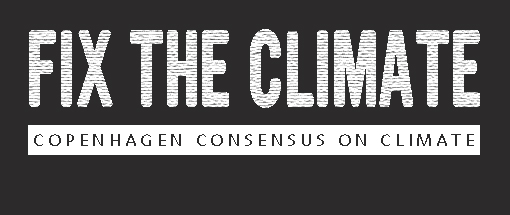Fix The Climate: Adapting to Climate Change’s Effects Assessment, Carraro et al
Assessment Paper
The working paper used by the Expert Panel is available for download here, the finalized paper has been published in Smart Solutions to Climate Change by Cambridge University Press.
No matter what we do, we are unlikely to avoid all of the impacts of climate change. Adaptation is unavoidable.
Adaptation is reducing our vulnerability to actual or expected climate change effects. It is mostly about thinking ahead. It could mean developing drought-resistant crops for some regions, or improving irrigation, rainwater storage or hurricane defenses. It may serve multiple purposes, including helping developing countries with education, health, and economic development.
Whatever the size of the costs, adaptation achieves more than carbon cuts in terms of reducing the damage from climate change.
An Analysis of Adaptation as a Response to Climate Change by Prof. Carlo Carraro, Dr. Francesco Bosello and dr. Enrica De Cian carries out an integrated analysis of both optimal mitigation (carbon cutting) and adaptation at the global and regional level.
Adaptation responses are split into three different categories: reactive adaptation (undertaken in response to climate change damage), proactive or anticipatory adaptation (undertaken before damage occurs), and investments in innovation for adaptation purposes (for example, in agriculture and health, where the discovery of new crops and vaccines is crucial to reducing vulnerability to climate change).
The size, timing, relative contribution to climate damage reduction, and the benefit-cost ratios of each of these strategies is assessed for the world as a whole, and for developed and developing countries in both a cooperative and a non-cooperative setting.
The study also takes into account the role of price signals and markets. This leads to two scenarios: A pessimistic one, in which policy-driven adaptation bears the burden, together with carbon cuts, of reducing climate damage; and an optimistic one, in which markets also autonomously contribute to reducing some damages through things like international trade flows, capital distribution and land allocation.
Carraro et al conclude that adaptation is an effective means of reducing climate-related damages. The benefit-cost ratios of adaptation expenditure are larger than one in all scenarios, and for high and low climate damages and discount rates. Nonetheless, benefit-cost ratios, and consequently global welfare, are even larger when adaptation and mitigation are implemented jointly.
Even though a clear trade-off between adaptation and mitigation is quantified, they are strategic complements and both contribute to a better control of climate damages. Mitigation prevails in the short-run and/or if the discount rate is low.
Most adaptation expenditures need to be carried out in developing countries. The size of the required resources is likely to be well beyond their adaptive capacity. Therefore, international cooperation is necessary to transfer resources to developing countries.

